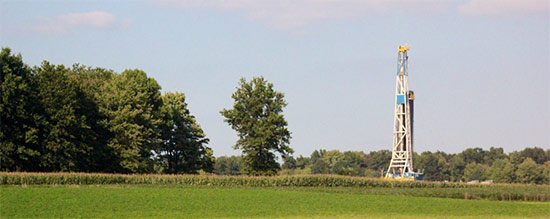Scientists recommend further monitoring of natural gas extraction sites
Hydraulic fracturing could push sediment into the Chesapeake Bay.
Natural gas resources underlie almost half of the Chesapeake Bay watershed, but some of the regulations that govern Bay cleanup do not take extraction-related pollution into account.
According to the Chesapeake Bay Program’s Scientific and Technical Advisory Committee (STAC), more research is needed to track the environmental effects of natural gas extraction and to help jurisdictions determine whether or not they must implement conservation practices to offset potential pollution loads and meet the Bay pollution diet.

Image courtesy WCN24/7/Flickr
The pollution diet, or Total Maximum Daily Load (TMDL), limits the amount of nutrient and sediment pollution that can enter the Bay from across the watershed. According to STAC, hydraulic fracturing, or “fracking,” has the potential to change local pollution loads, as natural gas extraction increases the erosion of sediment into local rivers and withdraws water from area sources, altering aquatic habitat and river flow.
In a factsheet released this week, STAC outlines the recommendations that the panel made following a workshop on shale gas development. STAC recommends that the Bay Program incorporate natural gas drilling into the Bay Watershed Model, which estimates the amount of nutrients and sediment reaching the Bay. STAC also recommends that the industry, scientific and policy-making communities continue to research shale gas development and implement conservation practices to lower natural gas extraction’s cumulative impact on the Bay.
Read more about the environmental effects of shale gas development in the watershed.

Comments
There are no comments.
Thank you!
Your comment has been received. Before it can be published, the comment will be reviewed by our team to ensure it adheres with our rules of engagement.
Back to recent stories